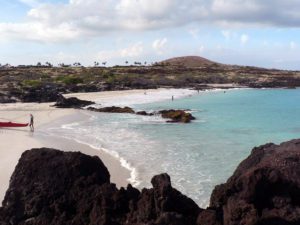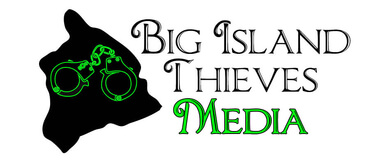 (Hāpuna Beach State Recreation Area, Hawai‘i Island) – The designation of Hāpuna Beach as the top-rated beach in the U.S., by Stephen Leatherman (aka Dr. Beach), highlights the continuing paradox of protecting the features that make it #1 while sharing it with ever-increasing throngs of visitors. This was Dr. Beach’s 30th annual ranking of best beaches.
(Hāpuna Beach State Recreation Area, Hawai‘i Island) – The designation of Hāpuna Beach as the top-rated beach in the U.S., by Stephen Leatherman (aka Dr. Beach), highlights the continuing paradox of protecting the features that make it #1 while sharing it with ever-increasing throngs of visitors. This was Dr. Beach’s 30th annual ranking of best beaches.
DLNR Division of State Parks Administrator Curt Cottrell said, “It is always an honor for one of our State Parks to receive recognition of this caliber. It reflects both the scenic and natural resource value of Hāpuna, as well as the quality of recent upgrades at this popular park.”
Visitors, whether kama‘aina or guests are cautioned that Hāpuna Beach and the adjacent Waialea Bay are sensitive and protected marine environments. Waialea Bay is one of eleven Hawai’i Marine Life Conservation Districts (MLCD) which enjoy the State’s greatest level of natural resource protections.
Cottrell added, “We’re approaching the busy summer season with post-pandemic visitor numbers expected to potentially increase sharply. This undoubtedly means more people spending time at Hāpuna and Waialea, so our conundrum is balancing resource protection, quality of experience, and public safety concerns.
Visitors should take note of entry requirements at the state recreation area, utilize reef-safe sunscreen, and be aware that lifeguard coverage at Hāpuna may be reduced, due to revenue losses and budget cuts created by the COVID-19 pandemic.
Plans are underway to provide free reef-safe sunscreen dispensers at Waialea. Sunscreen usage here and elsewhere around the state is traced to stunting the growth of coral reefs and potentially killing them. This is particularly an issue with the spawning of new corals which occurs during certain moon phases.
This is the reason the Waialea Bay section of Hāpuna State Recreation Area will be closed tomorrow and Saturday morning, until noon each day. Corals are expected to be spawning during this time and the reproduction is more successful without sunscreen lathered swimmers and snorkelers in the water.
Cottrell concluded, “The paradox we face each time when one of our parks garners national attention…this naturally brings more people to see these outstanding natural and cultural places, which makes it increasingly difficult to manage expectations, maintenance and upkeep, and most importantly the natural and cultural resources that bring people to Hawai‘i, as one of the world’s most sought-after destinations.”



